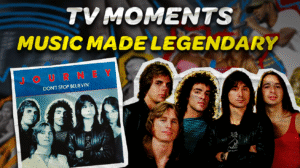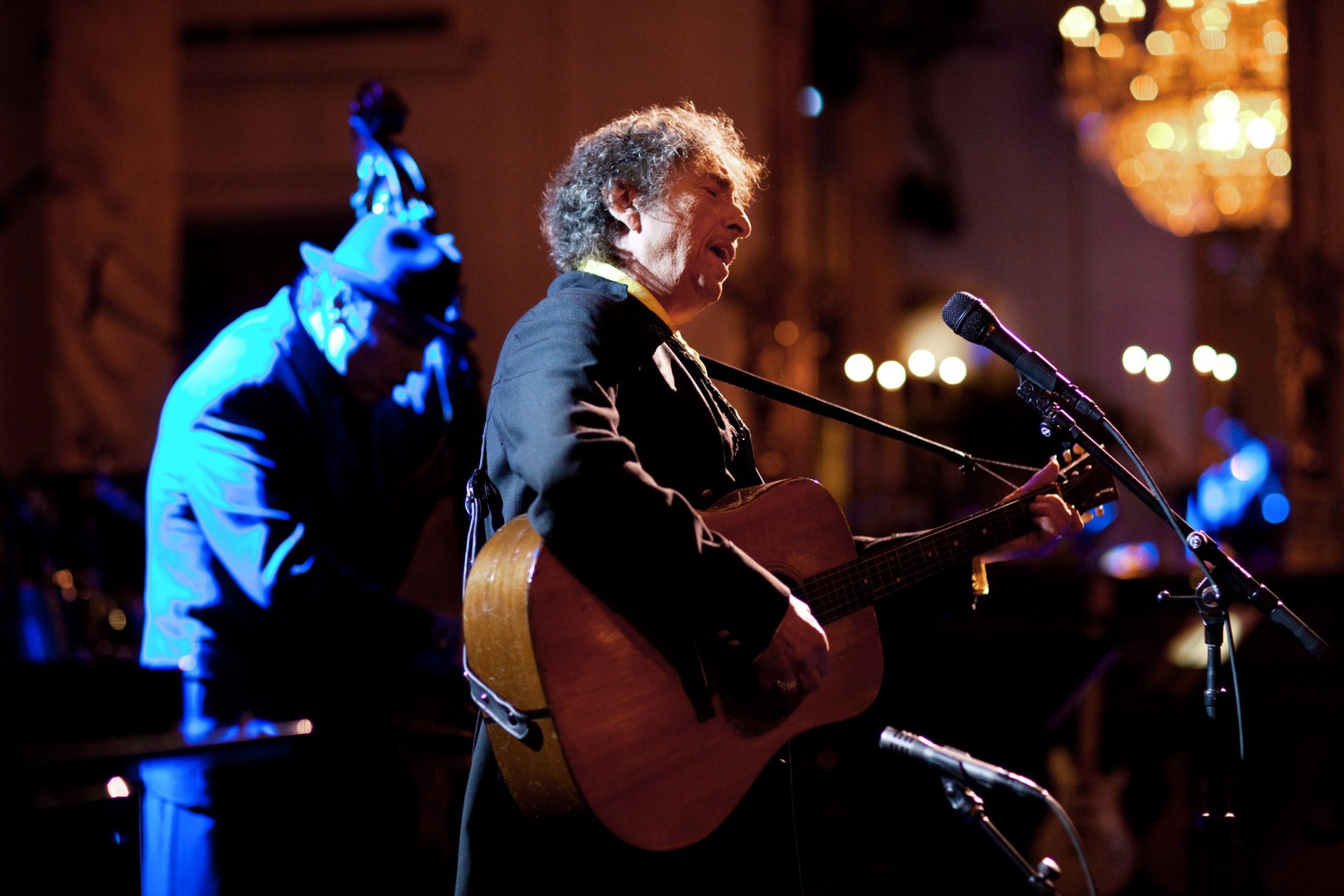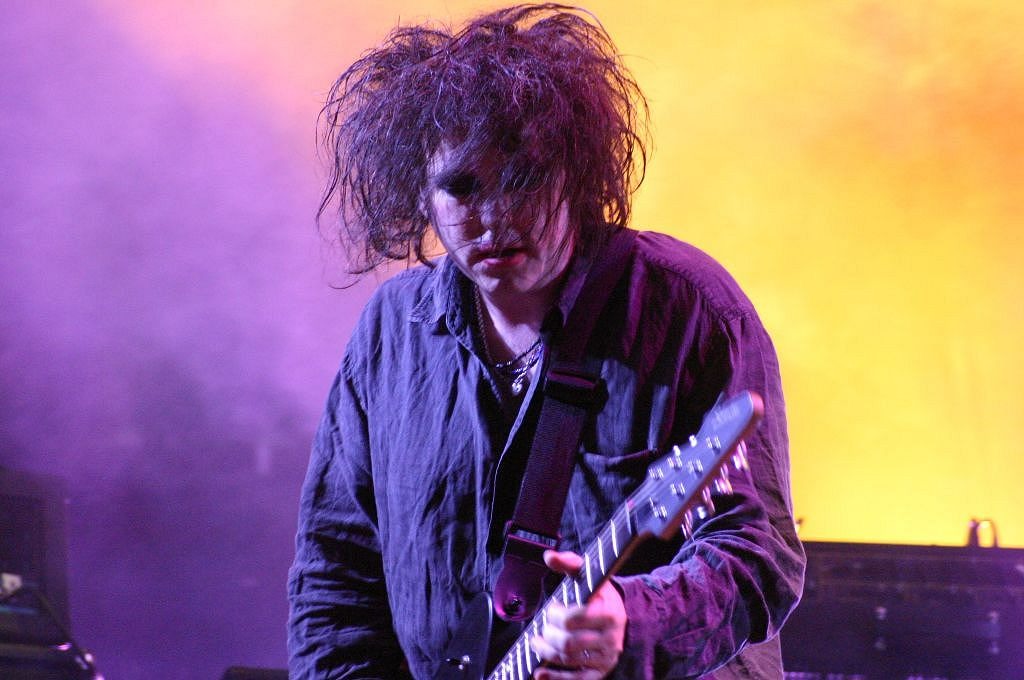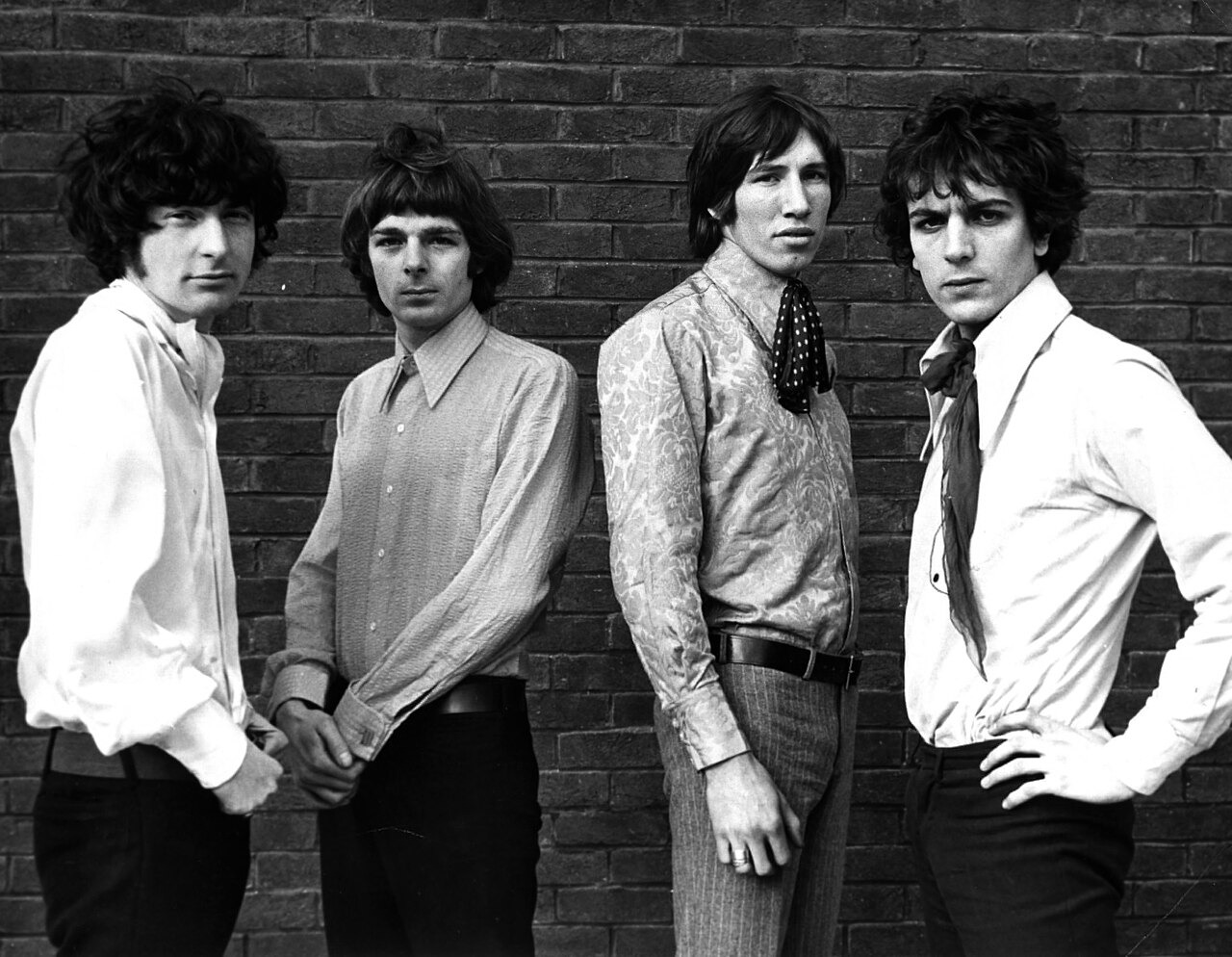
The music video terrain has shape-shifted from must-see TV events to algorithm-friendly content snacks. Once the domain of scheduled programming and industry gatekeepers, today’s visual music landscape operates like a neural network—constantly evolving, infinitely accessible, and unpredictably viral. This transformation hasn’t just shuffled how we consume beats with visuals; it’s rewired artistic expression, unleashed fashion phenomena, and carved cultural touchstones into our collective memory banks. The evolution maps directly onto how we process culture itself: fragmented, hyper-referential, and platform-agnostic.
Disclaimer: Some images used for commentary and educational purposes under fair use. All rights remain with their respective owners.
Lady Gaga’s Poker Face: Geometric Genesis

Gaga’s “Poker Face” wasn’t just a video—it was a visual algorithm for pop’s future operating system. The clip captured her emerging from an infinity pool wearing mirror-fragment fashion that reflected light like a human disco ball, setting up a visual language that would define a decade of pop aesthetics. The high-contrast lighting and precise geometric staging created an art installation that happened to have a killer hook attached. Those 838 million YouTube views don’t just represent eyes on a screen but the mathematical proof that deliberate visual weirdness could translate to mainstream cultural currency.
Katy Perry’s Hot N Cold: Confection Connection
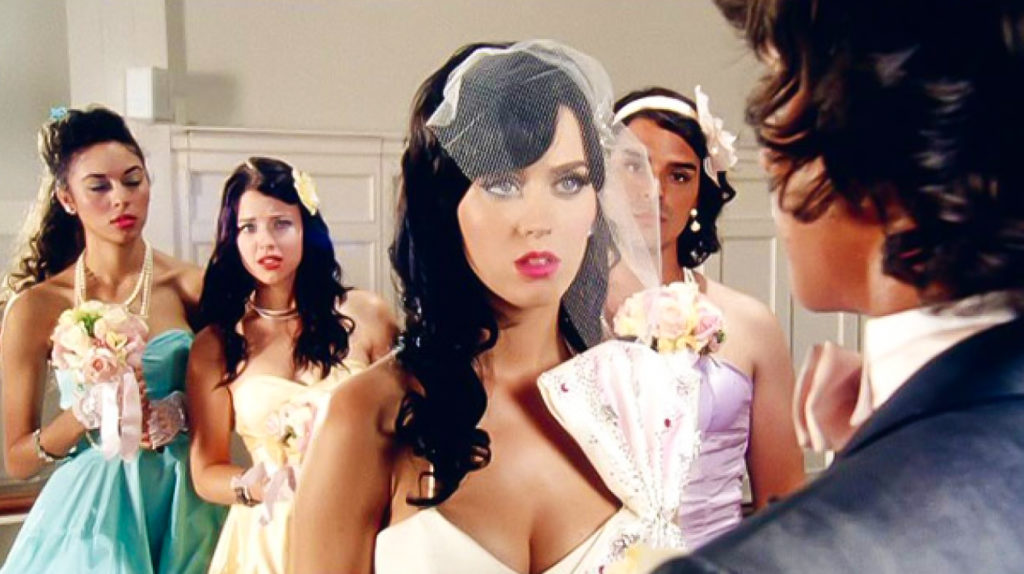
Perry’s “Hot N Cold” wedding-themed video launched her through a calculated sugar rush of visual storytelling. Like finding the perfect sample rate for a vintage synth, the video dialed in the exact frequency of playful/provocative that would become Perry’s signature. The bride-gone-wild narrative showcased her comedic timing while the saturated color palette established the visual equivalent of her candy-coated vocals. At 200 million views, it confirmed that music videos could function as personality delivery systems, establishing artist brands that extended beyond the three-minute runtime.
Taylor Swift’s You Belong With Me: Relatable ROM-Com

Swift’s “You Belong With Me” worked like a perfectly calibrated compressor on teenage emotion—making the quiet parts loud enough to hear and the loud parts manageable enough to feel. The video distilled high school hierarchy into instantly recognizable archetypes: Swift as both the overlooked dreamer and the unattainable cheerleader. This narrative duality functioned like split-band processing for identity, allowing viewers to see themselves in multiple characters simultaneously. The 1.6 billion views suggest that Swift had discovered the perfect resonant frequency for authentic storytelling in an increasingly inauthentic media landscape.
Beyonce’s Single Ladies: Minimal Maximalism

“Single Ladies” delivered a masterclass in visual restraint that somehow felt maximalist in impact—like a sine wave stripped of all harmonics but cranked to distortion levels. The black-and-white aesthetic and empty soundstage removed every element except what mattered: choreography that would be copied at weddings, in dorm rooms, and throughout social media for generations. The deliberately limited palette focused attention on the precision of movement—each flick of the wrist and roll of the hip mathematically calculated for maximum memorability. At 860 million views, it proved that sometimes the cleanest signal path produces the most powerful output.
Rebecca Black’s Friday: Accidental Anthem
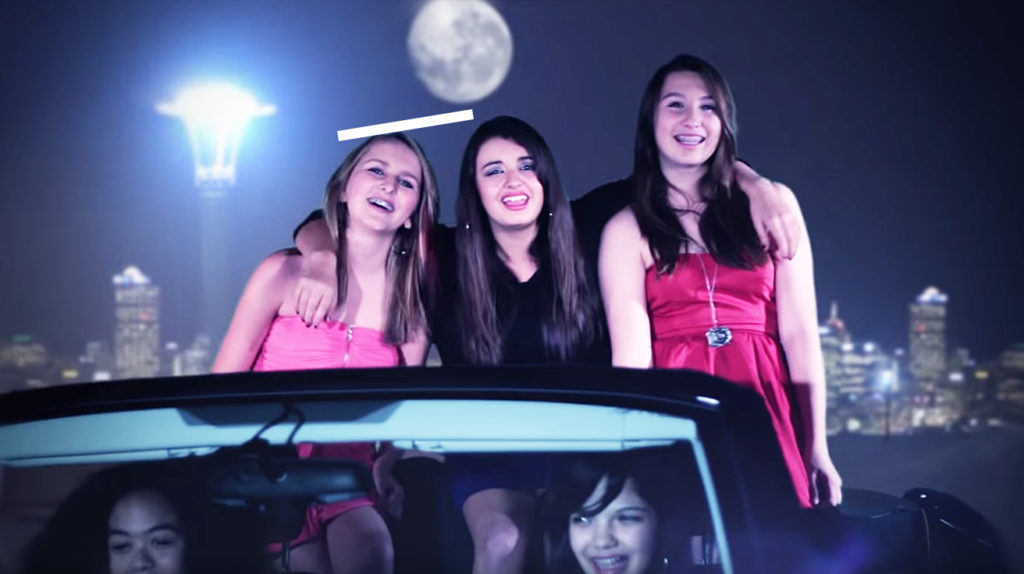
“Friday” redefined success metrics in the digital age like a circuit-bent toy discovering a glitch that sounds better than its intended function. Produced on a budget that wouldn’t cover catering on a major label shoot, the simplistic production and straightforward weekend narrative shouldn’t have worked by any conventional standard. Yet it accumulated millions of views through the paradoxical mechanics of internet culture, where “so bad it’s good” became a legitimate aesthetic category. Black’s video demonstrated how digital distribution had fundamentally recalibrated the relationship between traditional quality and cultural impact.
Gotye’s Somebody That I Used to Know: Analog in Digital

Gotye’s breakthrough video operated like a hand-wired analog synth in a DAW-dominated marketplace—meticulously crafted with physical effort that digital shortcuts couldn’t replicate. The 18-hour stop-motion session followed by a grueling 26-hour shoot resulted in a visual experience that felt tangibly human. The body painting process transformed performers into living canvases, creating a mesmerizing spectral effect that perfectly visualized the song’s emotional distance. The video proved that in an era of increasing digital shortcuts, sometimes the most affecting art comes from processes that leave human fingerprints all over the final product.
Drake’s Hotline Bling: Meme Machine
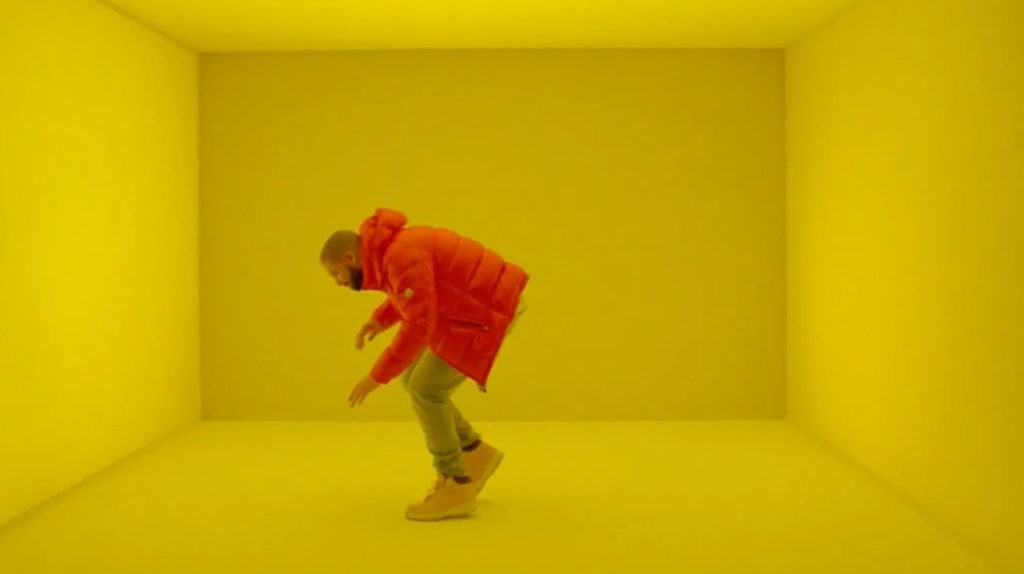
“Hotline Bling” was the first music video engineered specifically for its sample-ability—like releasing stems before the master track. Director X created a set of modular visual components: Drake dancing awkwardly, saturated color blocks inspired by light artist James Turrell, and minimalist staging that made isolation and extraction simple. Each movement became instantly separable from its context, ready to be remixed into reaction GIFs and social media content. The 1.9 billion views reflect not just complete watches but the countless fragmented appearances across platforms, turning Drake into a visual instrument that could be played by internet culture itself.
Lil Jon and DJ Snake’s Turn Down for What: Physical Comedy 2.0
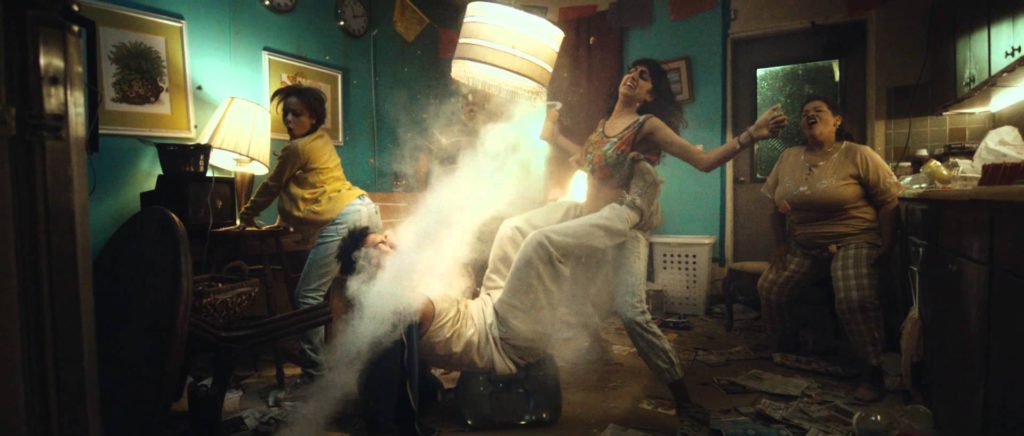
“Turn Down for What” harnessed chaos like a distortion pedal with unstable voltage that somehow lands on the perfect setting. The Daniels’ direction embraced a chaotic physicality rarely seen in the increasingly digital music video landscape. The shoot demanded actual bodily risk—Daniel Kwan literally bruised himself breaking through drywall to achieve the manic energy the concept required. This commitment to practical effects created an uncanny authenticity that CGI couldn’t replicate, driving the video beyond the billion-view mark. It demonstrated how intentional creative chaos could cut through the algorithmic noise of increasingly predictable content.
Psy’s Gangnam Style: Global Pattern Recognition
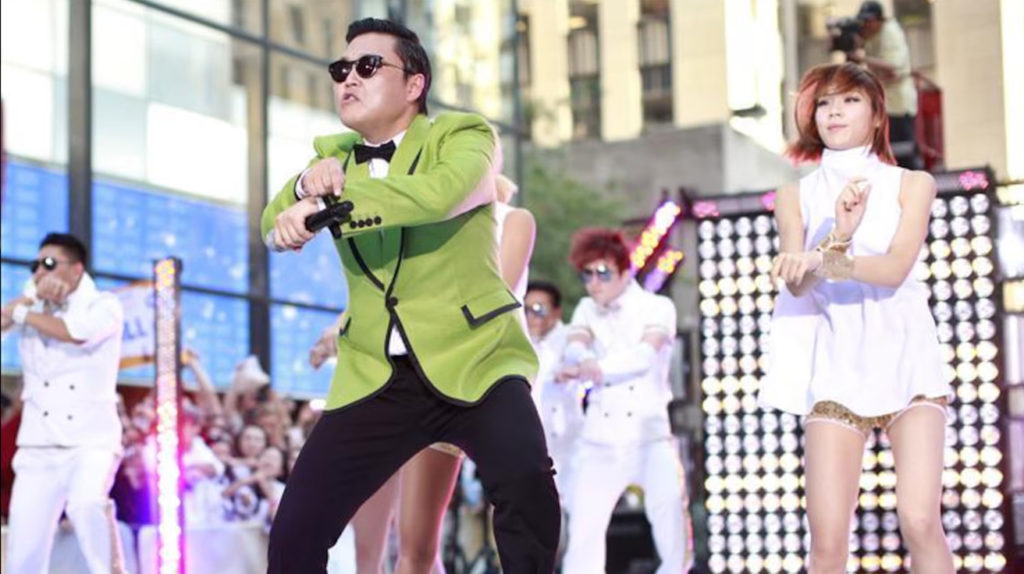
“Gangnam Style” worked like a universal translation algorithm that rendered cultural specificity into global language. Despite being rooted in specific South Korean cultural critique, the video’s horse-dance choreography and vibrant visual comedy transcended linguistic boundaries. Within 24 hours, it hit half a million views—early evidence of an unprecedented trajectory that would actually break YouTube’s view counter, forcing engineers to rewrite the platform’s code. This technical rupture perfectly symbolized how digital distribution had fundamentally altered music’s relationship to geographical and cultural borders.
Nicki Minaj’s Stupid Hoe: Sensory Overload
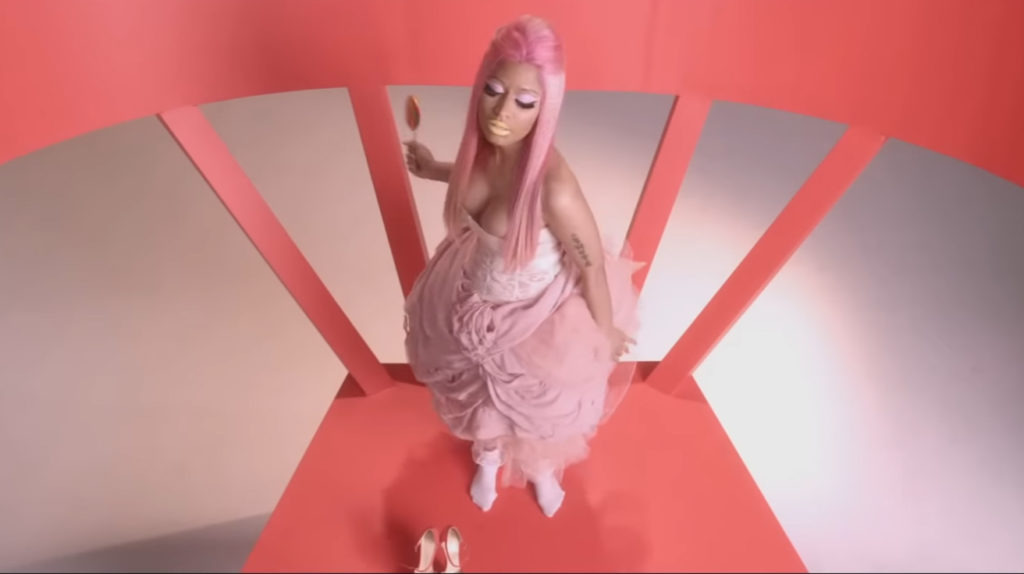
Minaj’s “Stupid Hoe” functioned like a maxed-out multiband compressor applied to visual storytelling—every frequency range pushed to its limit. Director Hype Williams deployed rapid-fire editing, fish-eye distortion, and oversaturated colors to create a deliberately overwhelming sensory experience. The 5 million views accumulated in 24 hours demonstrated the video’s instant impact. Like a sound wave pushed into clipping that produces unexpected harmonics, the visual intensity created its own aesthetic category—one that established Minaj’s willingness to push creative boundaries while influencing a generation of hip-hop visuals.
Miley Cyrus’s We Can’t Stop: Identity Modulation
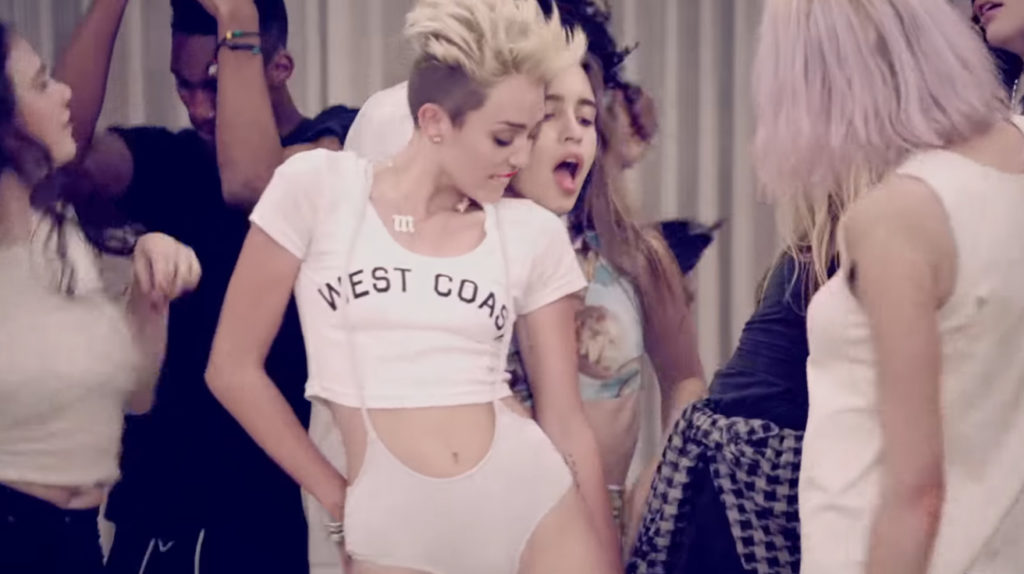
Cyrus’s “We Can’t Stop” operated like a phase shifter applied to her public persona, creating deliberate interference patterns with her previous Disney image. Director Diane Martel crafted a dreamlike party atmosphere filled with surreal elements that mirrored the song’s celebration of consequence-free behavior. The lo-fi aesthetic mimicked social media’s documentation style, acknowledging how personal identity was increasingly performed through digital platforms. The 10.7 million views in 24 hours confirmed public fascination with this transformational moment, establishing Cyrus as an artist willing to rewire her image through provocative visual reinvention.
One Direction’s Best Song Ever: Fandom Firmware
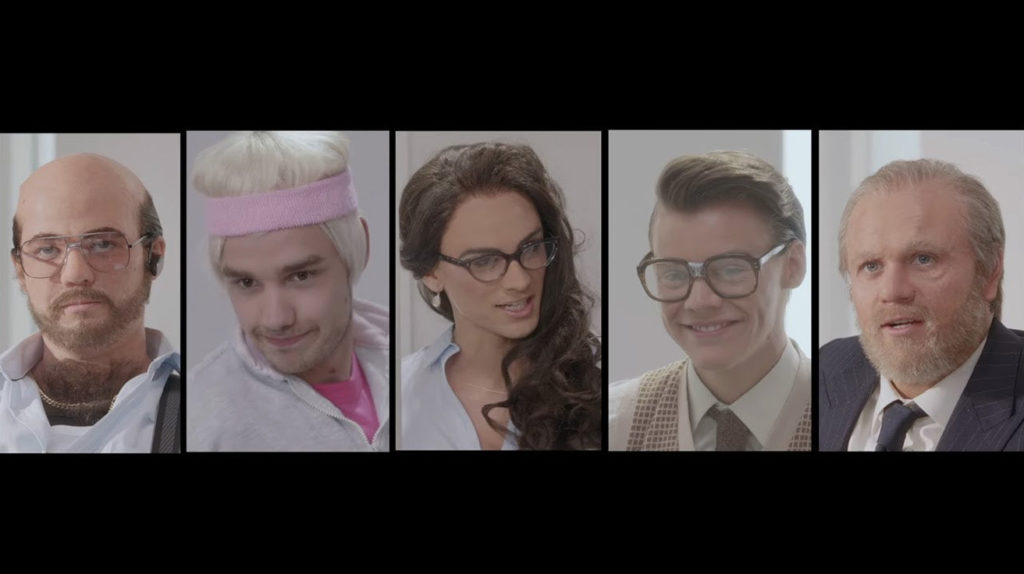
One Direction’s video functioned like a perfectly tuned algorithm responding to fan input. Released strategically before their concert film, the video featured band members playing multiple characters in a Hollywood studio setting—maximizing screen time for each member to satisfy fan preferences. The approach responded directly to fan engagement metrics, creating a feedback loop where coordinated viewing campaigns drove record-breaking numbers. This phenomenon demonstrated how dedicated online communities had gained direct influence over commercial success metrics, effectively rewriting the code that determined which videos rose to prominence.
Miley Cyrus’s Wrecking Ball: Vulnerability Amplified

“Wrecking Ball” created a visual paradox that worked like a contradictory signal chain—raw nakedness processed through high-gloss production. Director Terry Richardson captured Cyrus alternating between emotional close-ups with tears and the now-infamous naked wrecking ball swing, creating visual metaphors that matched the song’s emotional devastation. Cyrus later acknowledged how this provocative imagery permanently altered her public perception, demonstrating video’s power to create indelible moments that outlive their intended context. At over a billion views, it marked a pivotal point where vulnerability and spectacle converged into cultural permanence.
Robin Thicke and Pharrell’s Blurred Lines: Controversial Codec
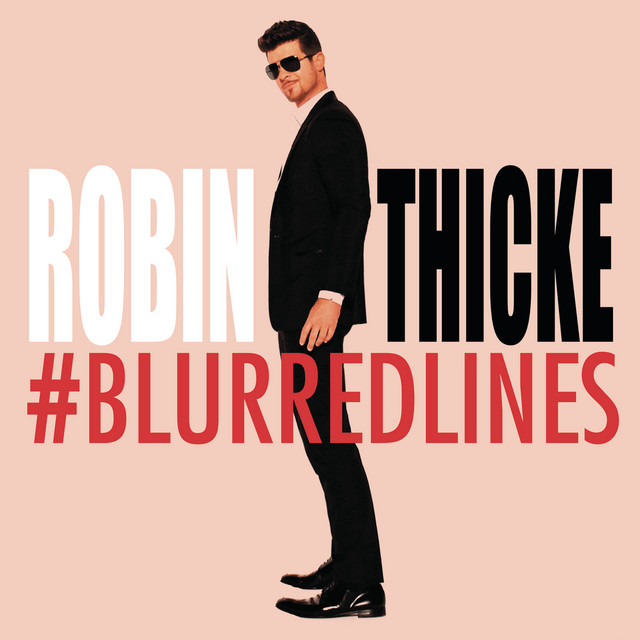
“Blurred Lines” demonstrated how the same visual information could be processed through different cultural filters to produce wildly divergent readings. Director Diane Martel created two versions—an uncensored cut with topless models and a clothed version—both featuring the same stark white backdrop and minimal styling. The visual approach sparked intense debate about objectification versus empowerment, with Martel’s stated intent to subvert male gaze expectations contrasting with widespread criticism. This tension revealed how music videos functioned increasingly as cultural test patterns, revealing societal frequencies and distortions through audience response.
Lady Gaga’s Alejandro: Referenced Rebellion

Gaga’s “Alejandro” mixed sources like a master sound engineer combining disparate samples into a coherent track. Director Steven Klein incorporated visual references from Madonna’s “Vogue” alongside military aesthetics inspired by interwar German visuals. The religious imagery—particularly Gaga in a nun’s habit swallowing rosary beads—created deliberate friction with established boundaries. With 770 million views, the video demonstrated how music videos could function as platforms for artistic and cultural commentary, processing historical references through contemporary visual filters to create new compound meanings.
Lady Gaga’s Born This Way: Birth of Vision

“Born This Way” functioned like a multi-layered project file where each visual element carried thematic significance. Director Nick Knight created a cosmic birth narrative with Gaga as a celestial mother figure, using prosthetic makeup to create alien bone structures that visualized the song’s themes of transformation. The skeleton-like facial modifications and latex-altered body shapes created a visual language for conceptualizing identity beyond conventional boundaries. The video established itself as an ambitious artistic statement that processed abstract concepts of acceptance and rebirth through concrete visual metaphors.
Nicki Minaj’s Anaconda: Reclamation Engine
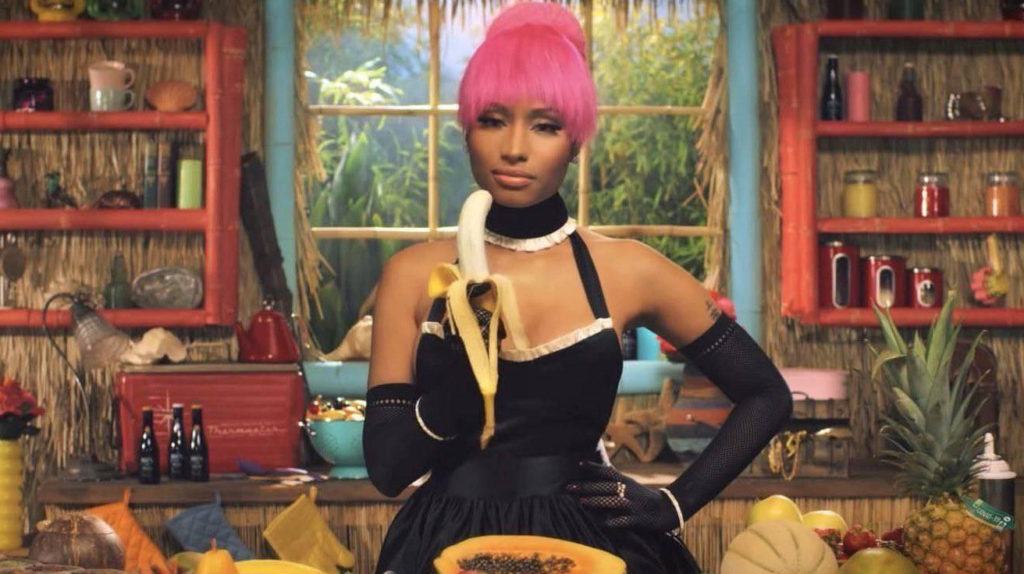
“Anaconda” worked like a sample flipper reconfiguring source material into something that completely recontextualized the original. Director Colin Tilley crafted scenes that directly referenced Sir Mix-a-Lot’s “Baby Got Back” while transforming the narrative from male gaze to female agency. The jungle settings and cooking segments played with cultural stereotypes while the choreography celebrated body types historically marginalized in mainstream media. Accumulating 19.6 million views in its first day, the video sparked discussions about who controls representation in music videos, demonstrating how the medium could function as a space for reclaiming cultural narratives.
Katy Perry’s Roar: Narrative Compression
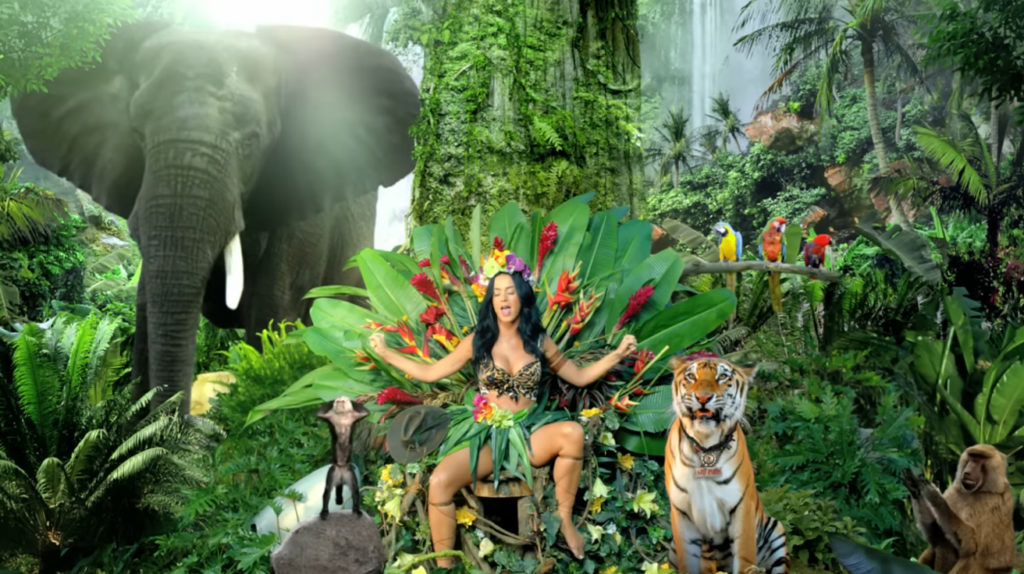
“Roar” compressed a feature film’s hero journey into four minutes of jungle survival storytelling. The video tracked Perry’s transformation from plane crash victim to confident jungle queen through a series of miniature character development beats. This condensed narrative arc perfectly matched the song’s empowerment messaging, using visual shorthand to represent personal growth. The production’s vibrant color palette and playful costume design established a visual template for accessible inspiration content. With 3.7 billion views, it demonstrated Perry’s ability to create videos that balanced commercial appeal with emotional resonance.
Taylor Swift’s Bad Blood: Star System Optimization
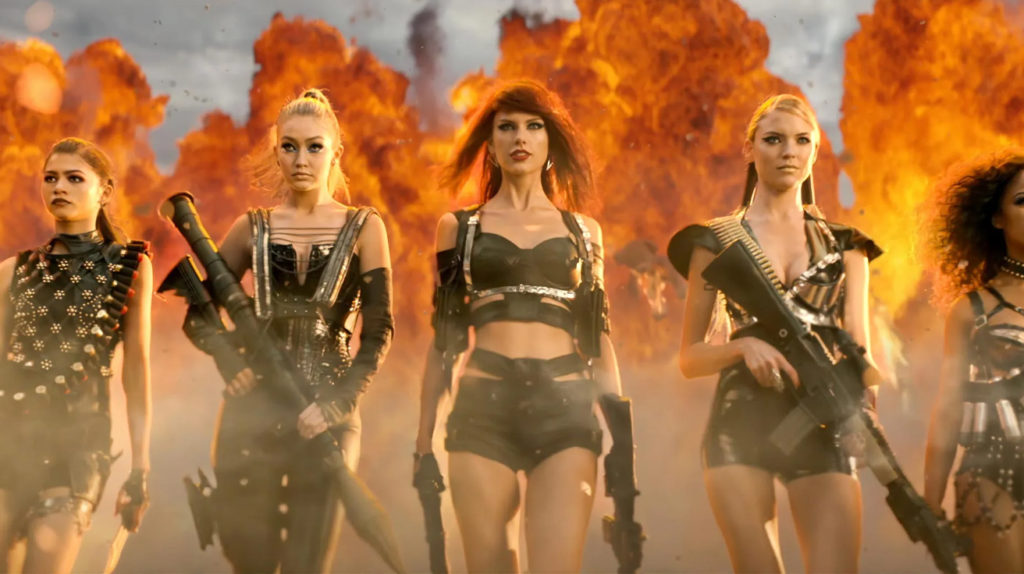
“Bad Blood” functioned like a maximalist mix where every track features a guest appearance. Director Joseph Kahn assembled Swift alongside celebrity friends including Karlie Kloss and Zendaya into an action movie pastiche that transformed a song about interpersonal betrayal into a multi-character spectacle. The high-budget aesthetic with martial arts sequences and futuristic technology marked Swift’s increasing visual ambition. Each performer’s character name was personally selected, adding collaborative authenticity to the project. The video’s approach demonstrated how expanding a song’s visual universe could create engagement beyond the music itself.
Taylor Swift’s Blank Space: Self-Awareness Simulator
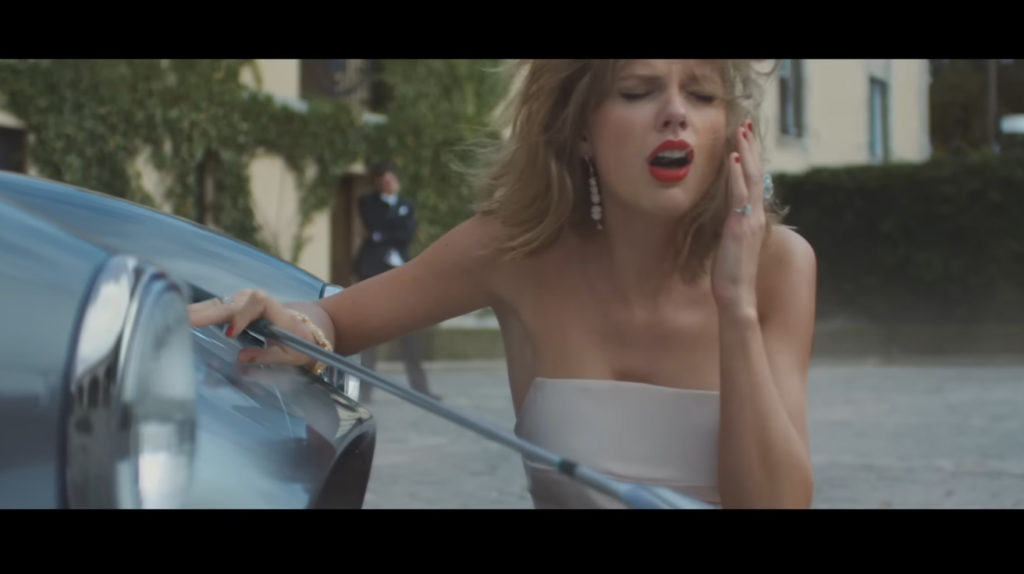
“Blank Space” operated like a self-referential plugin that processed Swift’s public perception through her own artistic filter. Director Joseph Kahn employed cinematic techniques borrowed from Kubrick and Spielberg to elevate a response to tabloid narratives into visual art. Set in the historic Oheka Castle, the video portrayed Swift as a glamorous but unstable character who methodically destroys her lover’s possessions, directly addressing media characterizations of her dating history. The production extended beyond traditional viewing with an interactive exploration app, demonstrating how music videos could evolve beyond passive consumption into interactive experiences.
Taylor Swift’s Shake It Off: Multiple Filter Processing
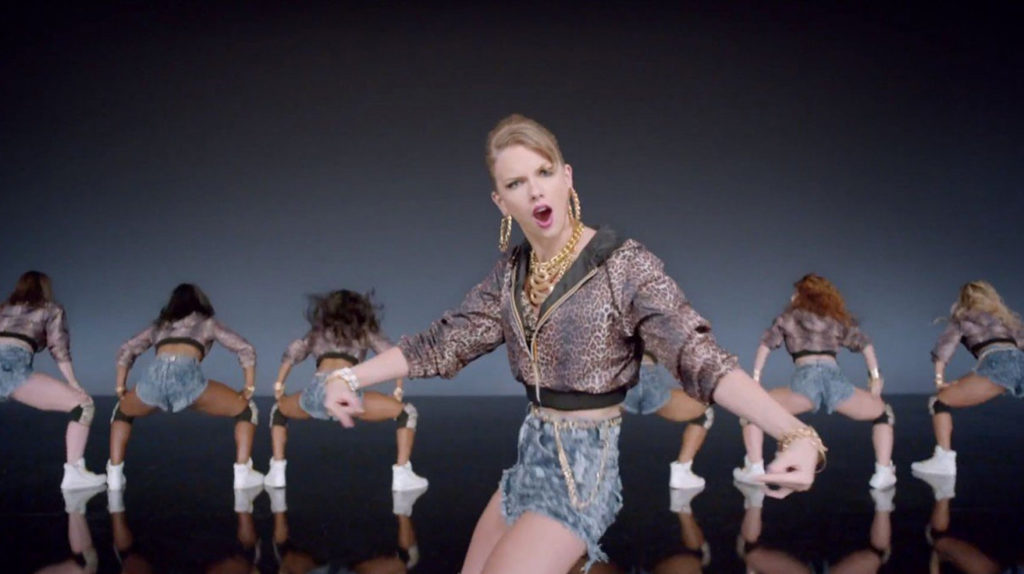
“Shake It Off” applied multiple genre filters to create a celebration of imperfection through contrast. Director Mark Romanek juxtaposed professional dancers across multiple styles (ballet, contemporary, breakdancing) with Swift’s deliberately awkward movements. The video incorporated visual references to other artists through costume and styling while maintaining Swift’s authentic voice. This approach perfectly matched her transition from country to pop, using visual multiplicity to demonstrate artistic range. The bright color palette and positive messaging created an uplifting experience that resonated globally as a template for feel-good content that balanced professionalism with relatable humanity.
Taylor Swift’s Look What You Made Me Do: Self-Sampling
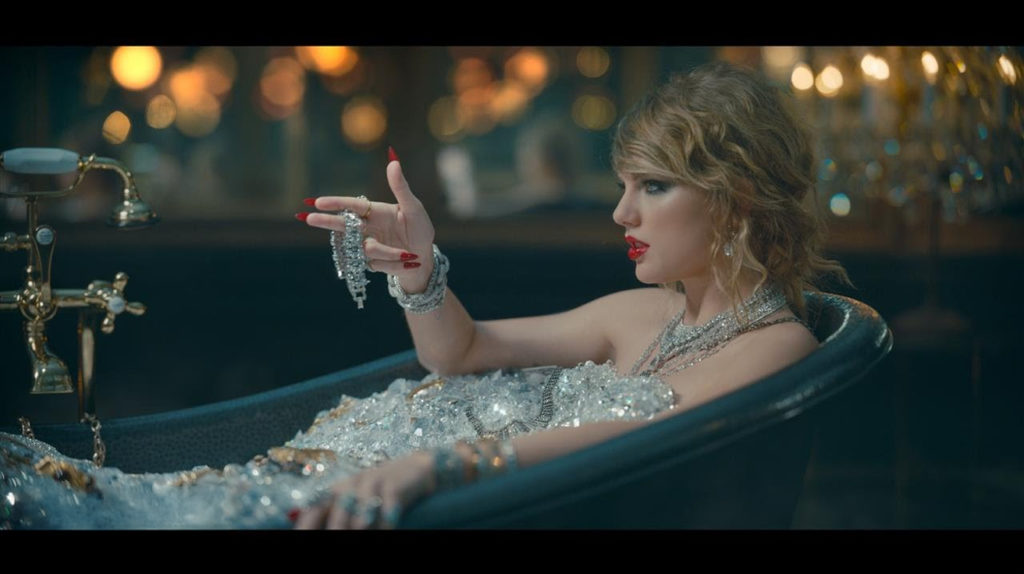
“Look What You Made Me Do” functioned like an artist sampling her own back catalog to create something new. The seven-month production culminated in Swift literally killing her former personas before showing them arguing with each other in the video’s final sequence. Director Joseph Kahn built a visual encyclopedia of Swift references, creating a meta-commentary on celebrity evolution. The technical ambition extended to props like a bathtub filled with diamonds reportedly worth over $12 million. Earning 43.2 million views in 24 hours and breaking Vevo’s record, the video demonstrated how self-referentiality could create powerful cultural moments that commented on celebrity while simultaneously generating it.
Kanye West’s Runaway: Expanded Format

“Runaway” stretched the music video format like a time-stretched sample that reveals new textures in familiar material. Inspired by Pink Floyd’s “The Wall” and aiming for the cultural impact of “Thriller,” West created a 35-minute film around the song’s framework. The narrative following a phoenix (played by model Selita Ebanks) who falls to Earth created a symbolic framework for exploring themes of beauty, creativity, and alienation. Working as both writer and director, West collaborated with visual artists to create sections featuring ballet dancers and elaborate dinner party sequences. The project demonstrated how music videos could expand beyond promotional tools into standalone artistic expressions.
Kanye West’s Power: Concentrated Signal
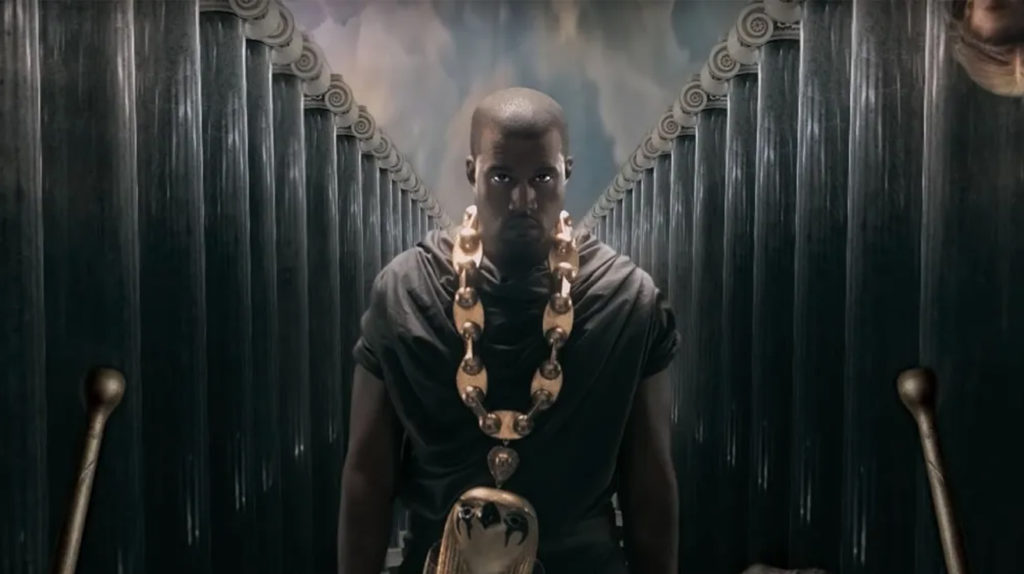
“Power” redefined the relationship between duration and impact like a perfectly crafted kick drum sample—brief but foundational. Collaborating with artist Marco Brambilla, West created what he termed a “moving painting” that used just 94 seconds of the song’s runtime. The video centered West in a neoclassical tableau inspired by Michelangelo, surrounded by columns and figures in a composition resembling religious iconography. The slow-motion movement created a hypnotic visual experience that defied conventional expectations about music video structure. This approach prioritized conceptual integrity over commercial considerations, creating an instantly iconic work that demonstrated how brevity could maximize impact.
Jay-Z’s Picasso Baby: Gallery-Studio Hybrid
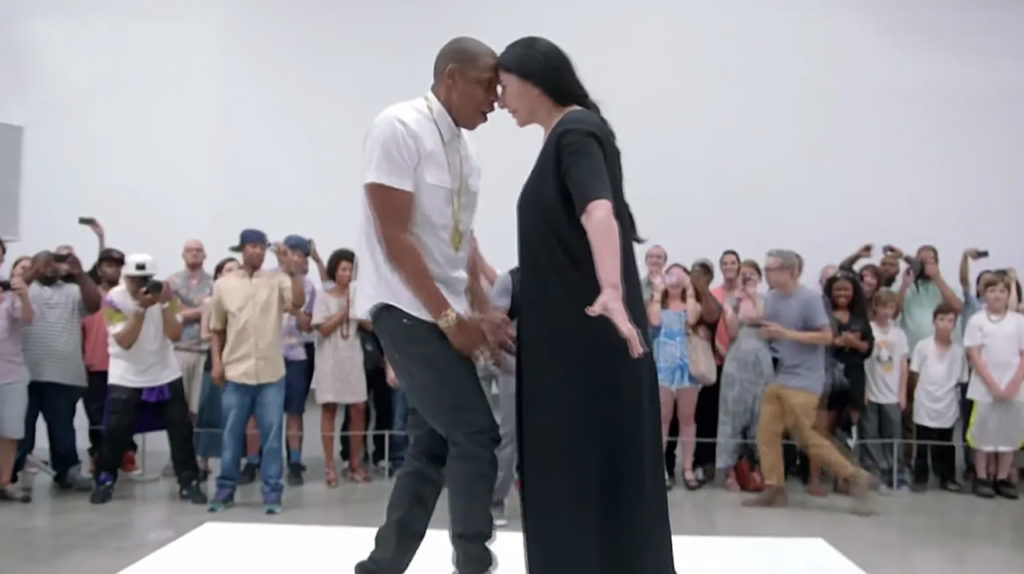
“Picasso Baby” erased boundaries between music video and performance art like a crossfader blending two separate sources. Director Mark Romanek documented Jay-Z performing the song repeatedly over six hours at Pace Gallery, inspired by Marina Abramović’s “The Artist Is Present.” Rather than creating a narrative, the video captured genuine interactions between Jay-Z and rotating audience members including artists, celebrities, and the public. This approach positioned Jay-Z as both performer and exhibit, creating meta-commentary on the relationship between hip-hop, high art, and celebrity. By bringing rap performance into a gallery setting, the project questioned traditional distinctions between artistic disciplines while elevating hip-hop as a legitimate art form.
Jay-Z’s 4:44: Experimental Film Techniques

Jay-Z’s “4:44” visual project bypassed conventional music video structure like a modular system ignoring traditional signal path. Released with minimal advance publicity and announced through mysterious billboards, the accompanying films functioned as artistic explorations rather than literal song interpretations. Some segments extended beyond ten minutes before musical portions began, challenging audience expectations about format and pacing. Directors including Arthur Jafa and Mark Romanek created visually distinct pieces exploring racial identity and personal growth. This approach positioned visuals as essential companions to the music rather than secondary promotional tools, demonstrating how established artists could use their platform to advance music video artistry beyond commercial constraints.
Beyonce’s Single Ladies (Take 2): Choreographic Precision

“Single Ladies” achieved iconic status through movement programming that felt simultaneously vintage and futuristic. Adapting Bob Fosse’s 1969 “Mexican Breakfast” routine from the Ed Sullivan Show, Beyoncé reimagined the choreography with contemporary flourishes while honoring its artistic lineage. The intensive rehearsal process spanning over a month ensured flawless execution that could be captured in continuous takes. The black and white visual treatment and stark studio setting eliminated distractions, focusing attention entirely on performance. This disciplined approach created an instantly recognizable visual signature that continues to inspire imitation, demonstrating how technical excellence can create cultural permanence.
Beyonce’s Run the World (Girls): Global Rhythm Section
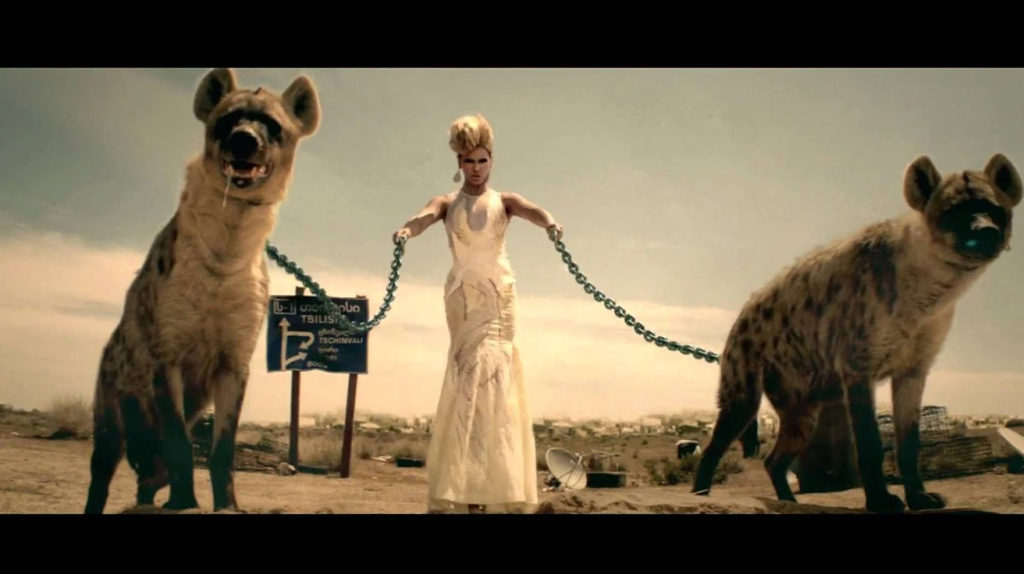
“Run the World” assembled global dance vocabularies like a producer collecting rare percussion instruments. After discovering Mozambican dance group Tofo Tofo online, Beyoncé flew them to Los Angeles to learn their movements firsthand—demonstrating commitment to cultural authenticity. Director Francis Lawrence created a post-apocalyptic setting where Beyoncé leads women against male counterparts through movement and fashion. The production featured elaborate costume changes and technically complex dance sequences performed in challenging desert conditions. This approach created a powerful visual manifesto celebrating female resilience across cultural boundaries, demonstrating how music videos could function as platforms for cross-cultural artistic exchange.
Beyonce’s Lemonade: Visual Album Architecture
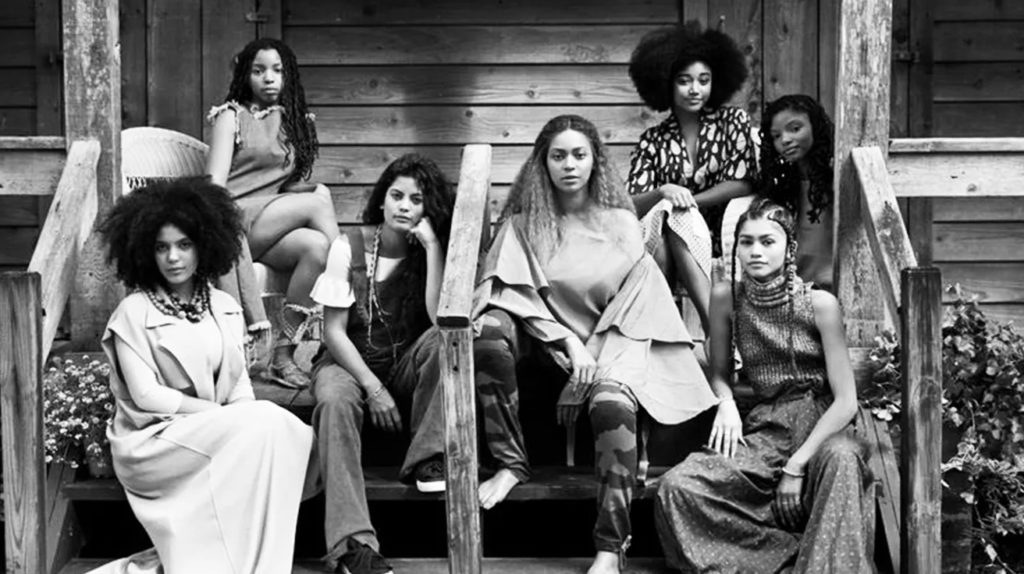
“Lemonade” constructed a complete emotional ecosystem like a perfectly designed modular synthesizer where each component complements the whole. The hour-long visual album explored Black feminism, betrayal, and resilience through interconnected chapters with distinct visual signatures. Drawing from influences including Toni Morrison and Octavia Butler, directors including Kahlil Joseph and Melina Matsoukas created segments exploring intuition, denial, anger, and redemption. The production incorporated Southern Gothic aesthetics alongside Yoruba imagery to create a textured visual experience addressing both personal pain and broader sociopolitical concerns. This comprehensive approach established a new standard for visual music that balanced emotional honesty with sophisticated cultural commentary.
Kendrick Lamar’s Alright: Hope as Resistance
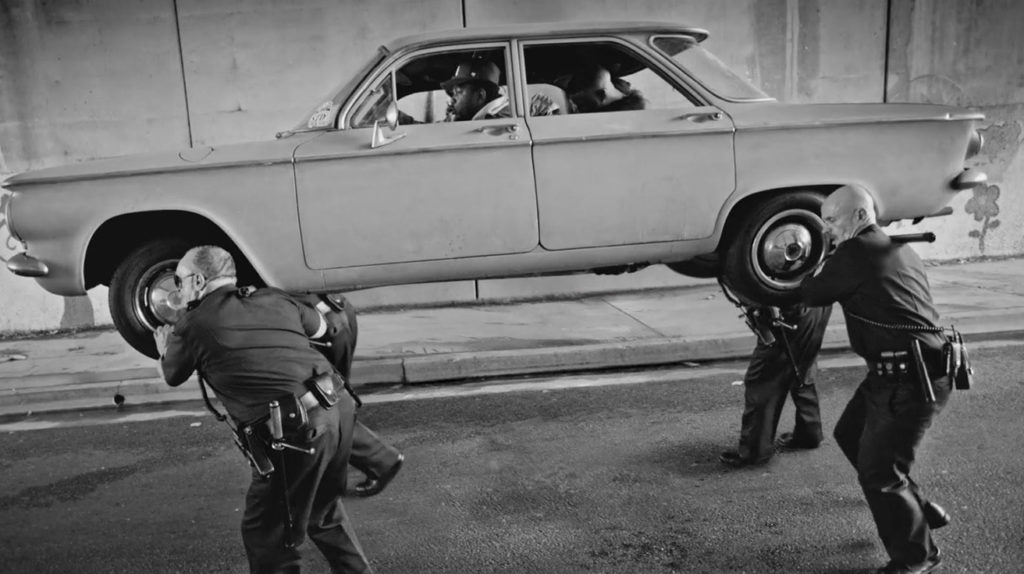
“Alright” transformed a soundtrack of resilience into powerful visual symbolism like a distortion pedal that somehow clarifies rather than obscures. Director Colin Tilley created striking black-and-white imagery balancing surreal elements with documentary-like portrayals of police brutality and community solidarity. The opening sequence with officers carrying Lamar like royalty created an immediate visual metaphor addressing power dynamics and Black success in America. Throughout the video, Lamar floats above street level—a literal visualization of transcending circumstances that became a symbol for resistance movements. This balance of harsh reality and magical realism provided visual language for discussing systemic oppression while maintaining hope.
Kendrick Lamar’s Humble: Technical Innovation
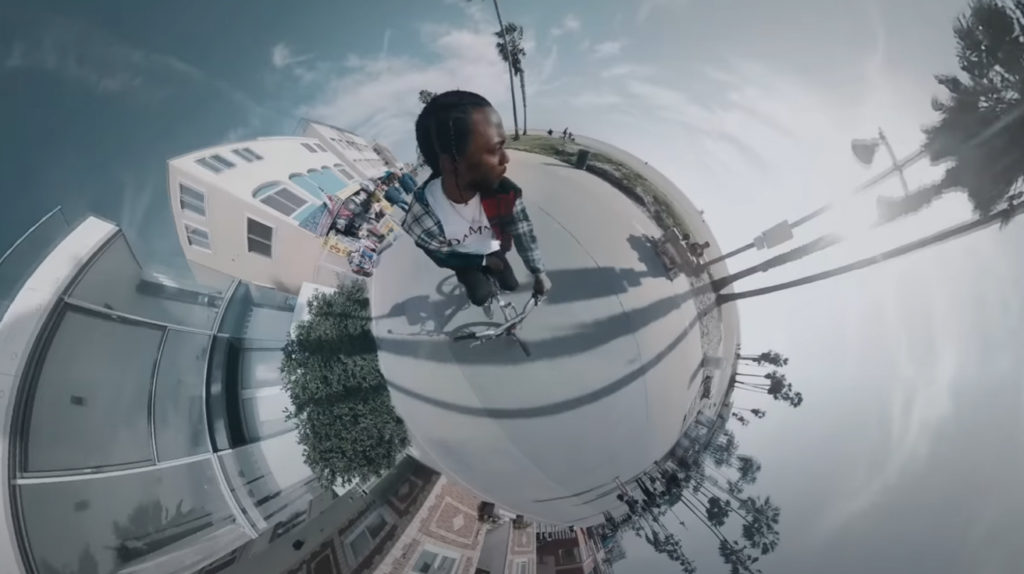
“Humble” created memorable visual moments through technical virtuosity like a producer discovering new processing techniques. Director Dave Meyers employed distinctive approaches including a fish-eye lens distorting Lamar’s face in extreme close-up and split-screen effects showing natural versus made-up beauty standards. The video’s reimagining of “The Last Supper” with Lamar at its center generated discussion about religious and cultural implications. Scenes showing Lamar’s head engulfed in flames and standing amid sniper laser sights created metaphors about danger and authenticity in hip-hop. This approach invited viewers to form personal interpretations while creating imagery that complemented the song’s message—a sophisticated visual strategy elevating music video storytelling beyond literal narrative.
Childish Gambino’s This Is America: Layered Commentary
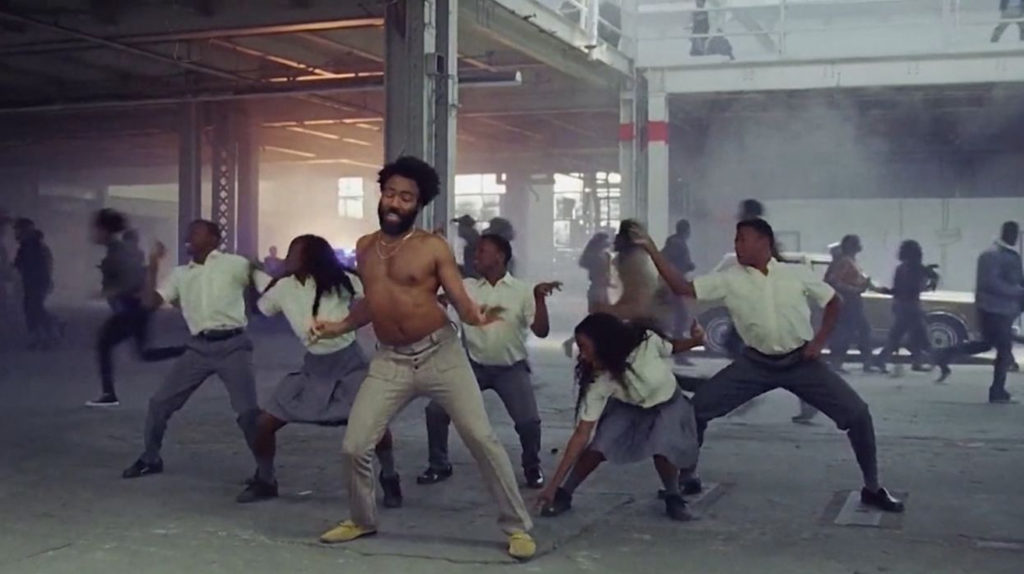
“This Is America” functioned like a multitrack recording where background elements are as important as the lead vocal. Director Hiro Murai created juxtapositions between celebratory dance sequences and shocking violence, captured in continuous long takes that prevented viewers from looking away. Donald Glover’s performance incorporated viral dance moves alongside exaggerated expressions, creating tension between entertainment and horror. Background action showing chaos while Glover dances in the foreground served as metaphor for how Black trauma is overlooked amid cultural consumption. This multilayered approach generated extensive analysis, demonstrating how music videos could function as profound social commentary while achieving commercial success through artistic integrity.
Taylor Swift’s Me!: Technicolor Transition
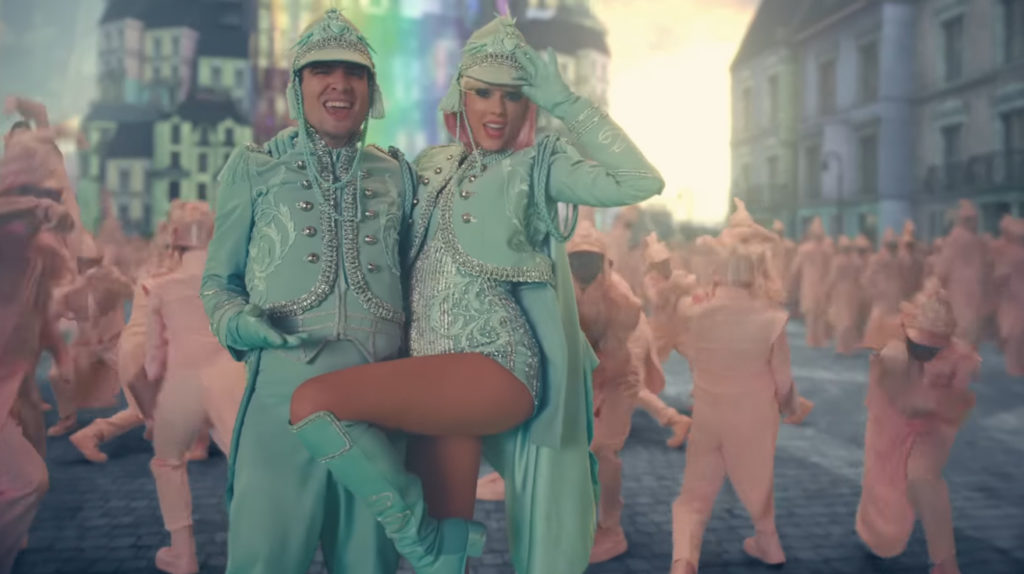
“Me!” marked a dramatic visual shift like a filter that transforms a monochrome image into rainbow hues. The production began with a pink snake transforming into butterflies—a deliberate symbol of Swift’s artistic evolution. Director Dave Meyers created a fantastical world featuring pastel buildings and elaborate choreography performed with Brendon Urie. The unabashed optimism and technicolor aesthetic contrasted with Swift’s previous darker imagery, signaling evolution toward a more positive artistic phase. Setting a 24-hour viewing record that remained unmatched for years with 65 million views, the video demonstrated Swift’s continued ability to create cultural moments through strategic visual reinvention while establishing the candy-colored language that would define her next era.
The Johnny Cash Project: Collective Memory Bank

[Image]
Recommended Screenshots:
#Video Timestamps: 39:50-40:20 [User-submitted animated frames, evolving portrait of Cash]
#Video Timestamps: 40:20-40:50 [Interface showing collaborative frame creation]
The Johnny Cash Project pioneered collaborative creation like an open-source software project where individual contributions create something greater than its parts. Chris Milk’s innovative concept invited viewers to draw individual frames for Cash’s final recording, “Ain’t No Grave.” The custom interface assigned specific frames to participants who could interpret Cash through personal artistic styles from photorealistic rendering to abstract interpretation. The resulting video evolved continuously as new submissions replaced existing frames, creating a living memorial reflecting Cash’s cultural impact. This approach transformed passive viewers into active collaborators, demonstrating how digital technology could foster collective artistic expression while honoring the emotional resonance of Cash’s legacy.
Arcade Fire’s The Wilderness Downtown: Personalized Processing

“The Wilderness Downtown” revolutionized music video experience through data-driven personalization like an algorithm that adapts to individual user input. Collaboration between Arcade Fire and director Chris Milk used Google Chrome capabilities to create customized interactive experiences. Viewers entered childhood addresses, which the system incorporated using Maps and Street View imagery, showing animated birds and runners moving through familiar landscapes. This personalization created emotional connection between the song’s themes of nostalgia and individual memories. By blending music, technology, and personal data, the project demonstrated how digital innovation could transform music videos from passive viewing experiences into interactive art that resonated on an individual level.
Bob Dylan’s Like a Rolling Stone: Interactive Channels
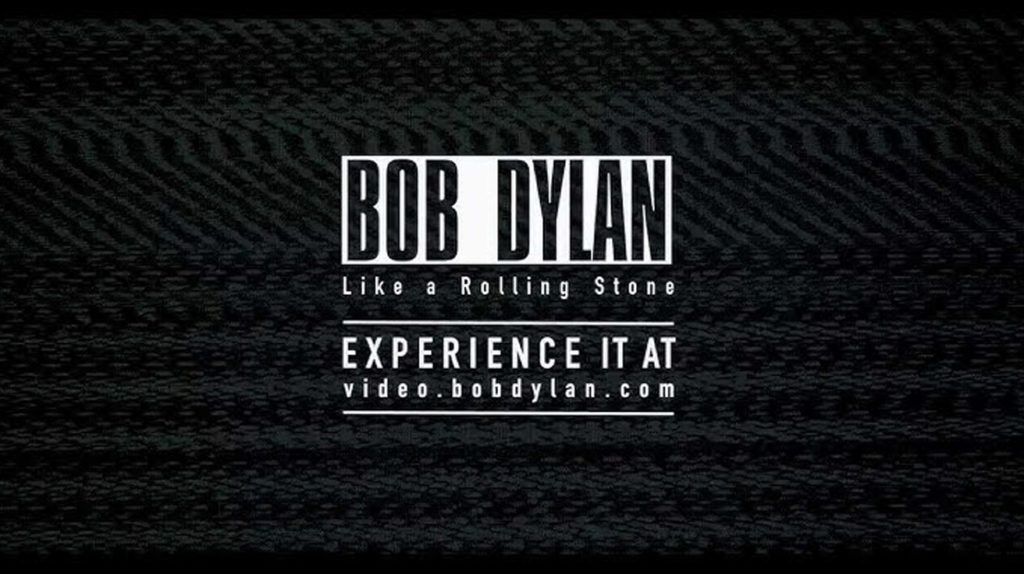
Dylan’s “Like a Rolling Stone” received digital reimagining like an analog classic remastered for modern platforms. Collaborating with Eko in 2013, the project transformed the song into an interactive viewing experience resembling channel-surfing. Viewers could switch between sixteen simulated TV channels—including news broadcasts and cooking programs—with performers lip-syncing Dylan’s lyrics in perfect synchronization. This seamless integration across diverse settings demonstrated how iconic music could refresh for digital audiences while preserving artistic integrity. By transforming passive listeners into active participants shaping their viewing experience, the project bridged generational gaps while establishing new possibilities for music video engagement in the streaming era.
Rosalia’s Album Motomami: Vertical Integration

Rosalía’s “Motomami” launch redefined digital presentation like a producer optimizing output specifically for earbuds rather than studio monitors. The TikTok live performance embraced vertical aspect ratio optimized for mobile viewing, acknowledging how modern audiences consume visual content through smartphones rather than traditional screens. The performance incorporated references to iconic music videos while establishing distinctive aesthetic. Camera movements were specifically choreographed for vertical format impact, using rapid cuts and dynamic movements that acknowledged platform-specific viewing habits. This forward-thinking approach demonstrated how artists could adapt music video aesthetics for emerging platforms while reaching massive online audiences through channels that traditional television broadcasts could no longer access.




